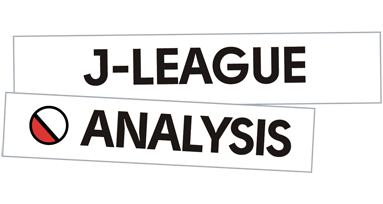In what was anticipated as a tight match up proved to be just as entertaining, as second-placed Cerezo Osaka played host to former Asian Champions League finalists, Kashima Antlers. Before this match, the away side had won their past five games.
Sitting in fifth position on the J League table, a win for Kashima would edge them closer to FC Tokyo in third position. Conversely, a win for Cerezo Osaka would make sure they keep on the toes of league leaders Kawasaki Fontale and extend the gap between second and third position.
With Kashima having beat Osaka in their previous five meetings, this tactical analysis will highlight the key tactics used by both teams and analyse how Cerezo Osaka looked to overcome recent history and walk away with three points in the bag.
Line up
Former manager of La Liga side Villareal, Miguel Angel Lotina lined his squad up in his 4-4-2 formation. Jin-Hyeon Kim started in between the sticks whilst the centre-back pairing of Matej Jonjić and Ayumu Seko sat in front of the South Korean keeper. Riku Matsuda started at right-back, whilst Eiichi Katayama featured on the left. Hiroshi Kiyotake, Naoyuki Fujita, Leandro Desábato, and Tatsuhiro Sakamoto formed the midfield line of four whilst Hiroaki Okuno and the Brazilian born, Bruno Mendes made up the strike pair.
Previous player of Serie A side AS Roma, Antonio Carlos Zago also lined the Antlers up in a 4-4-2 system. Yuya Oki started in goal with the back four consisting of Katsuya Nagato at left-back, Ikuma Sekigawa and Tomoya Inukai as the centre-backs and Kei Koizumi as the right-back. Juan, Kento Misaom Léo Silva, and Ryuji Izumi made up the midfield line whilst Everaldo and Shoma Doi sat up top as the two strikers.
Cerezo Osaka Build up play
They lined up in a 4-4-2 formation on paper, but this did not remain throughout the game. When building up, Osaka had 2 main variations with the aim of progressing forward by switching play and advancing through wider areas. This was reflected in the data which showed that only 5% of Osaka’s attack was directed through the middle of the pitch.

The first method of progressing forward was in a 3-5-2 formation. Fujita dropped in from midfield to support the backline, whilst the fullbacks Matsuda and Katayama pushed forward to provide width. Since the Antlers were pressing with an attacking line of three, having the number eight drop in not only supported the two centre-backs, but it also created extra space for the wide players, since the edge players of each defensive line were more focused on blocking passing lanes to the strikers and forcing play wide. As seen above, Osaka’s full-backs weren’t limited to staying in wide positions and were allowed the freedom to position themselves on the inside channels. This was more frequently done on the right side with Matsuda, compared to Katayama on the left.
The second method of building up came when Kashima started to defend higher up the pitch and press as the centre-backs received the ball. Osaka stuck to having a back three but to give them more supporting options, Fujita and Desábato would move to a double pivot. Having the extra holding midfielder also meant that they could pin their opposite midfielders, creating a large gap between the Antler’s midfield and defensive line for the strikers (mainly Okuno) to drop in and receive off a longer aerial pass.
As we see above, both Fujita and Desábato are sitting behind the first line of defence and dropping in to support the keeper on the ball. This drags in Kashima’s midfield line, creating that large space in behind. Interestingly, you can see that the number 7 for Kashima pointing behind him to signal that Okuno is dropping into this large space. Since he is the player about to pick up Seko who is about to receive the ball, someone else needs to mark him.
As a consequence, Desábato’s marker leaves him and moves to pick up Okuno. This now leaves the Argentinian free to receive and drive forward. If the run of Okuna doesn’t happen, then Desábato doesn’t get free. Arguably, this is a defensive mistake by Kashima because they allowed a direct receiver to become free. Rather than number 20 dropping to pick up Okuno, Kashima’s lowest midfielder (not in picture) should be tracking the run. This ensures that they still maintain their structural balance relative to Osaka’s attacking threat in behind.
Kashima’s Aerial threat
When in possession, Kashima maintained their back four structure with Nagato (14) and Koizumi (37) providing support from the flanks. Misao and Silva were also positionally stable as the two holding midfielders, who floated around central areas to provide the link between the back four and the more attacking playmakers. If Kashima got caught in transition, their role was also to provide cover and balance to the team’s structure and protect the back-line. However, the movements of Izumi (11) and Alano (7) were more flexible. They would either position themselves next to the two strikers when the ball was out wide, or drop into midfield to receive the pass, and look to combine.
Here we can see the structure of the Antlers as the ball travels towards the right flank. One of the ways which they would threaten the goal was to cross the ball in and look to find the head of Everaldo or one of the players supporting the striker (in this case Izumi). As Osaka are not heavily pressing, the two holding midfielders can stay in between lines. When more pressure was placed on the centre-backs by the Osaka strike pair, then they would drop and support.

As Koizumi receives the ball out wide, Doi is in the process of shifting across, so the fullback plays to Misao supporting underneath. Here is where Doi’s marker, Seko, makes his defensive error and doesn’t follow the striker out wide. Typically, as a central defender, your role is to make sure that you are well connected with your back-line and protect the space around the box from opposition runners. However, in this situation, there is no threat in front of Jonjić and the space behind Seko is protected by his midfield teammates. Therefore, to limit Doi’s space on the ball and prevent the cross in, Seko needs to follow him out wide. Instead, he stops tracking when Koizumi plays back to Misao, allowing the Kashima striker the space he needs to cross the ball in and find Everaldo.
As seen below, the majority of the crosses came from Koizumi and Doi from similar areas of the pitch. One of the reasons for this was due to the distance the defending fullback had to cover in order to get to the ball in time, especially off the switch of play. When watching other teams who have a similar defensive structure, usually the wide midfielders would push out and engage because of the shorter distances they could cover.
Therefore, by getting players with time and space on the ball down the right-hand side and packing the box with attacking runners, Kashima were able to create a number of scoring opportunities and placed sustained pressure on the Osaka back four.
Kashima’s counter-pressing
During the first half of the match, Kashima were very aggressive in their press once they had lost the ball in the opposition half. This was made easier by the short distances immediate defenders had to cover to mark supporting players once they lost the ball. This meant that the player who lost the ball would usually trigger the press and close down Osaka’s closest receiver followed by supporting players in central areas locking on to potential receivers. The second phase of this counter was using the wide players to drop and tuck in to protect the back-line if Osaka managed to bypass their press.

We can see an example of this above where Kashima have just lost the ball centrally in front of the Osaka defensive line. In this moment, Everaldo is the player who lost the ball, so he becomes the first defender who triggers the movement. Doi and Alano are the second and third defenders, so they lock on to close supporting teammates whilst Silva moves to mark Okuna. As part of the second phase, both wide players in Koizumi and Nagato drop and provide protection to the back-line. This is in case Osaka play a long aerial pass to their striker, Mendes. With slight variations in positioning, the way the Antlers counter-pressed remained consistent throughout the game with 40 opposition half recoveries compared to Osaka’s 20 opposition half recoveries.
One of the dangers of pushing a number of players forward is that it leaves space in behind the midfield line. This can leave your back-line exposed, especially if you have strikers who are good are big, strong, and are good in aerial duels. In the scenario below, Osaka have played long to find Mendes 1v1 with his direct marker.
As Mendes successfully wins his aerial battle with Inukai, this allows Sakamoto and Kiyotake to sprint forward and support the Brazilian underneath. They are able to attack open spaces behind Kashima’s back-line. What didn’t help Kashima, in this case, was the lack of urgency by Izumi (bottom left) to get back and close down his Sakamoto in front of him. If Mendes was able to turn the opposite direction, Osaka would have a 3v1 numerical advantage.
Conclusion
With the game being locked together at 1-1 at half time, Kashima came out firing in the second half, with Everaldo netting the winning goal in the 46th minute. Whilst both teams created a number of opportunities to score, the match finished off with a 2-1 win to the Antlers for their sixth consecutive win against Osaka.
This analysis highlighted the key differences in the approach of Osaka and Kashima. With this win, Zago’s men sit in equal fourth place of the J League tied with Nagoya on 30 points. Conversely the gap between second and third close to just four points with Osaka sitting in second place and Kawasaki starting to slip away from their grasp.












